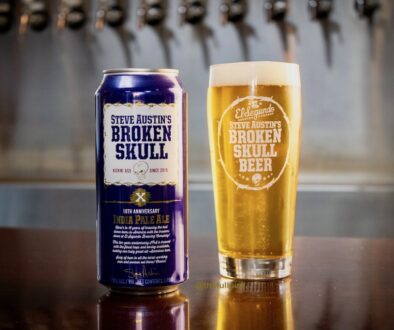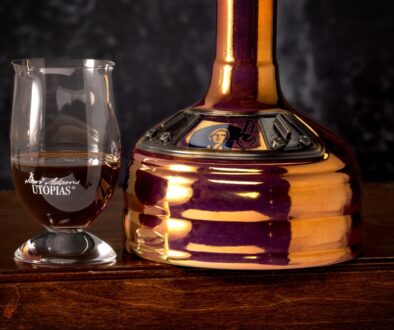Merchant du Vin: European Union Certification
![]() Food and Drink from the European Union’s classic regions of production
Food and Drink from the European Union’s classic regions of production
Each part of the earth – large or small – has a range of things that make it specific: a longitude and latitude; a unique, differing mineral composition; a climate based on location and geography; a history based on this location. Each place has multilayered life, from micro-organisms through plants to bugs and animals.
Due to these factors – climate, geography, soil, organisms – regions have flavors associated with them. The French call the concept “terrior,” meaning “territoriality – as applies to flavor.” This concept of “flavor in the earth” is put into specific terms by France, where wines are named and labeled not for their grape variety, but for the region the grapes grew. French “Appellation Controlee” laws mean that a wine is from a specific region, sometimes even as small as a particular vineyard that may be only a few acres.
Does “place” really matter that much when it comes to flavor? According to some, yes. For example: cheesemakers in Parma, Italy innovated a style of aromatic, hard cheese that became world-famous. Say a cheesemaker hundreds or thousands of miles away from Parma makes a cheese in a similar style: it may have excellent qualities and similar characteristics to this specific cheese, Parmesan, so the maker may choose to call it “Parmesan Cheese.” So those producers are just using a shorthand term to describe the qualities of their cheese, right? Producers of the original versions and most consumers disagree. Tasters with fine palettes will say that there is indeed a difference.
The European Union, officially formed in 1993 but really with roots back as far as the 1950s, is really a political and economic entity built to streamline travel, commerce and government within member countries. The EU has taken on a wide range of responsibilities from currency to labor, and ranging all the way to this interesting topic: where geographic place meets flavor. The European Union encompasses regions where food and drink have a long and deep history. As part of their economic responsibilty to the member nations, the EU has devised a means of indicating special geographic roots to food and drink, a means that may not describe specific characteristics but acknowledges that they certainly exist. The Agriculture and Rural Development section of the EU has created specific standards for drinks & foods, designed to recognize and protect their unique character. After a regional beverage or food is registered, the producer is entitled to put a specific logo on their label.
The guarantee is simple: this brewer or kitchen or farm is not using a regional name inappropriately. There are three categories: Protected Designation of Origin – covers agricultural products and foodstuffs which are produced, processed and prepared in a given geographical area using recognized know-how. Protected Geographical Indication – covers agricultural products and foodstuffs closely linked to the geographical area. At least one of the stages of production, processing or preparation takes place in the area. Traditional Specialty Guaranteed – highlights traditional character, either in the composition or means of production.
Ayinger Brewery makes the classic Bavarian line up: a Helles – pale lager – Jahrhundertbier; the benchmark Munich dunkles, Altbairisch Dunkel; Brau-Weisse and Ur-Weisse, light and dark wheat beers; Oktober Fest-Marzen seasonally; and recent “Fifth Place All-Time Top Beers on Planet Earth” in BeerAdvocate magazine, Ayinger Celebrator Doppelbock – the style benchmark and calibration standard of all doppelbocks. With their family roots in the village and many decades of brewing experience, with German malt and hops, with the semi-alpine climate (the Alps are on the near southern horizon from Aying) . . . the beers brewed and fermented here have a Bavarian regionality, and are accorded PGI status. Somehow, they do have the flavor of Bavaria. Lindemans Brewery produces only wild-fermented beers at their nearly 200-year old family brewery in Vlezenbeek. Geuze/gueuze style beers being made outside the lambic region may taste fantastic, deserving praise, medals, and sales. But do they taste like lambics, with their natural Senne Valley microflora – a ratio of wild yeast species that may change by the mile or by the half-mile? Most serious gueuze drinkers would agree with the EU TSG assignation: there is something unique to real lambics – and a brewery making beer outside of this region but labeling it lambic is violating stringent EU standards. Zatec Brewery, west of Prague in the Czech Republic, brews Czech lager in the region it was developed, with hops from the fields around the city of Zatec. The Zatec Brewery is entitled to use the PDO logo.
Interesting? Valuable? You could test the concept of regional flavor yourself: grate some Parmesan cheese, then grate a parmesan-style cheese made somewhere else. If they are both pungent, aromatic, even a bit earthy . . . are they the same? Do you prefer one? Are British pales ales different in some identifiable if not categorizable way from British-style pale ales brewed elsewhere? Taste a British pale ale side-by-side with the same style brewed out of Britain. Try Bavarian hefe-weizen next to Bavarian-STYLE hefe-weizen. Try a Czech lager next to a Pilsner-style lager. You may form an opinion based on your own results . . . and you certainly will have tried some tasty beers.



